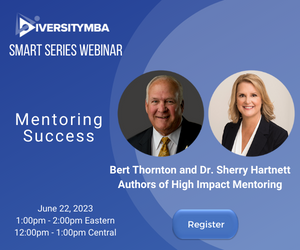First, let me apologize for the gap in writing as I have been on a speaking tour; going forward, you can definitely depend on my insights on a biweekly basis. A few weeks ago, I had the opportunity to speak to a group of human resource and diversity professionals in North Carolina on the topic of disruptive inclusion.
While I was a bit intimidated by this topic because the election had just occurred, I found it appropriate for me to discuss disruptive inclusion required for change in a series of my next blog posts.
Before we begin this conversation, let’s get on the same page with regard to the meaning of disruption. The basic meaning of “disrupt” is to prevent events from occurring as usual; and the basic meaning of inclusion is the act of bringing a person or persons into a group.
With that said, what does disruption look like? Here are a couple of visuals for you: 1) You don’t have to be a parent to have experienced a little tyke at the age of 2 who honestly believes it is his world and it’s all about him…affectionately known as the terrible twos; 2) America had a female Democratic candidate for president, which is definitely a sign of inclusion; 3) Voters elected a president so far outside the norm you can call it disruptive.
The reality is that disruption is the main ingredient for change. Today in our workplace and marketplace, change is occurring everyday as companies try to figure out how to stay competitive while remaining relevant. It is hard but not impossible. I just want to create a framework for what change should consist of, and help us recognize that in some key functions and behaviors a paradigm shift is upon us. Once we recognize this, the work can begin.
Simply put, I am approaching it in this way: Disruption requires us to ReWork, ReThink and ReTool every process to drive results. Understand this: The most difficult challenge to change is the daily behavior of how people get work done. The question to answer is: How do we operationalize change.
There is obviously so much that can be discussed about changing every process and/or method so we will focus on three key areas in this series that I believe are forces that will impact institutional behavior and change: 1) those in talent acquisition need to ReWork how they approach hiring; 2) succession planners need to ReThink how companies develop diverse slates as the intent of advancing women and people of color; 3) and companies must ReTool employees to compete in today’s workforce to ensure sustainability.
We will provide insights on these topics from the DMBA 2016 inclusive leadership index. My intent is to share with you trends that will support your decision-making on how to disrupt your current culture to prepare for a competitive advantage. I will also share best practice companies so they can be a resource to you.
Below are some tips to think about when establishing best practices:
• Establishing minimum requirements to get the job done is not a best practice; it is simply what is required to do the job – for example, providing accommodations for a person with disabilities.
• Emerging practices occur when companies implement new ideas that are not widespread in the organization or marketplace; basically, trying a new way to deliver services as a pilot that deliver great results.
• Best Practices are defined as repeatable, sustainable, measurable and impactful activities that drive results over and over again. These practices are implemented companywide and shared broadly in the marketplace.
• Next Practices are defined as the innovative approaches to try new ways of doing work that has not been done yet.
Companies that dare to reach beyond what they know and implement what can be are the courageous behaviors that drive change.
Here you have the framework that will drive our discussion for the next few blogs on setting the stage to disrupt the status quo to drive inclusion. Start now thinking about, “How do I approach what I do today differently?”









